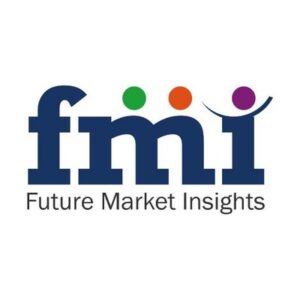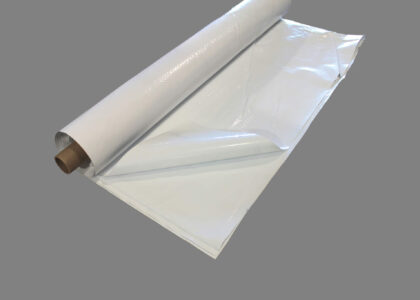Advancing at a rapid pace, market of nanographic printing is witnessing a surge in demand, driven by both enhanced output quality and increased operational speeds. Tech companies are strategically targeting the burgeoning packaging printing market, recognizing the potential for significant growth in nanographic printing. One key factor fueling this growth is the utilization of water-based ink infused with nano-sized pigments, boasting diameters measured in the tens of nanometers.
The market for nanographic printing is experiencing a notable impact from the rising disposable income in emerging regions. Additionally, the surge in demand is fueled by rapid industrialization and substantial progress in printing technology, underscoring the pivotal role these factors play in the growth of nanographic printing.
With a surge in disposable income in Asia Pacific, the momentum of the Nanographic printing market is expected to expand beyond, driven by increased consumer spending. Western Europe, particularly Germany, the United Kingdom, Italy, and France, is poised for accelerated growth, outpacing the average market trajectory. In the Middle East and Africa (MEA), robust revenue growth is anticipated, led by substantial profits in GCC countries and South Africa. Meanwhile, Japan is projected to maintain steady but stagnant growth in the Nanographic printing market over the forthcoming years. These regional dynamics underscore the global impact of Nanographic printing across diverse markets.
Request Sample Report: https://www.futuremarketinsights.com/reports/sample/rep-gb-4216
Applications of Nanographic Printing
The versatility of nanographic printing opens doors to numerous applications across industries. LSI Keywords: “Nanographic Printing Market”, “Applications of Nanographic Printing”
- Packaging Perfection: Nanographic printing elevates packaging design with intricate graphics, vibrant colors, and product-specific customization.
- Marketing Materials: Brochures, posters, and banners benefit from nanographic printing’s ability to capture attention with lifelike imagery.
- Textile Transformation: The fashion industry embraces nanographic printing for fabric design, enabling limitless creativity.
- Labeling Advancements: Nanographic labels offer exceptional durability and visual appeal for products of all types.
Global Nanographic Printing Market – Key Players
Presently Nanographic printing is majorly offered by Landa Corporation Ltd, which is based in Israel. Owing to its benefits and high quality of printing, the global printing market is expected to become more competitive, with more players focusing on R & D and coming up with better and faster printers.
Nanographic Printing vs. Traditional Printing Methods
How does nanographic printing fare against traditional methods? Let’s explore:
- Speed and Efficiency: Nanographic printing boasts impressive speeds, outpacing traditional methods like offset printing.
- Quality Matters: The enhanced precision and color accuracy of nanographic printing surpass the capabilities of conventional techniques.
- Eco-Conscious Choice: Reduced waste, minimal setup, and eco-friendly inks position nanographic printing as a greener alternative.
The Market Landscape and Future Prospects
Nanographic printing isn’t just a passing trend; it’s a growing market with promising prospects.
- Current Market Trends: The Nanographic Printing Market is witnessing steady growth, driven by demand from industries seeking high-quality printing solutions.
- Future Innovations: Ongoing research in nanotechnology promises further enhancements in print speed, color gamut, and substrate compatibility.
Ready to Learn About Our Approach? Explore Our Methodology: https://www.futuremarketinsights.com/request-report-methodology/rep-gb-4216
Global Nanographic Printing – Market Segmentation
The global Nanographic printing market is segmented on the basis of material type and end use type.
Segmentation for Global Nanographic printing on the basis of material type:
- Paper & Paper Board
- Laminates
- Metal
- Glass
- Flexible plastics
- Rigid plastics
- Others
Segmentation for Global Nanographic printing on the basis of end use:
- Food and beverages
- Healthcare
- Cosmetics
- Packaging and label printing
- Others
Overcoming Challenges in Nanographic Printing
While Nanographic Printing holds immense promise, it’s not without challenges:
- Initial Investment: Adopting Nanographic Printing technology requires a substantial initial investment, making it a decision that businesses need to carefully consider.
- Color Matching: Achieving consistent color matching across different print jobs can be challenging due to the precise nature of the technology.
About Future Market Insights (FMI)
Future Market Insights, Inc. (ESOMAR certified, recipient of the Stevie Award, and a member of the Greater New York Chamber of Commerce) offers profound insights into the driving factors that are boosting demand in the market. FMI stands as the leading global provider of market intelligence, advisory services, consulting, and events for the Packaging, Food and Beverage, Consumer, Technology, Healthcare, Industrial, and Chemicals markets. With a vast team of over 5000 analysts worldwide, FMI provides global, regional, and local expertise on diverse domains and industry trends across more than 110 countries.
Contact Us:
Future Market Insights Inc.
Christiana Corporate, 200 Continental Drive,
Suite 401, Newark, Delaware – 19713, USA
T: +1-845-579-5705
For Sales Enquiries: sales@futuremarketinsights.com
Website: https://www.futuremarketinsights.com
LinkedIn| Twitter| Blogs | YouTube



